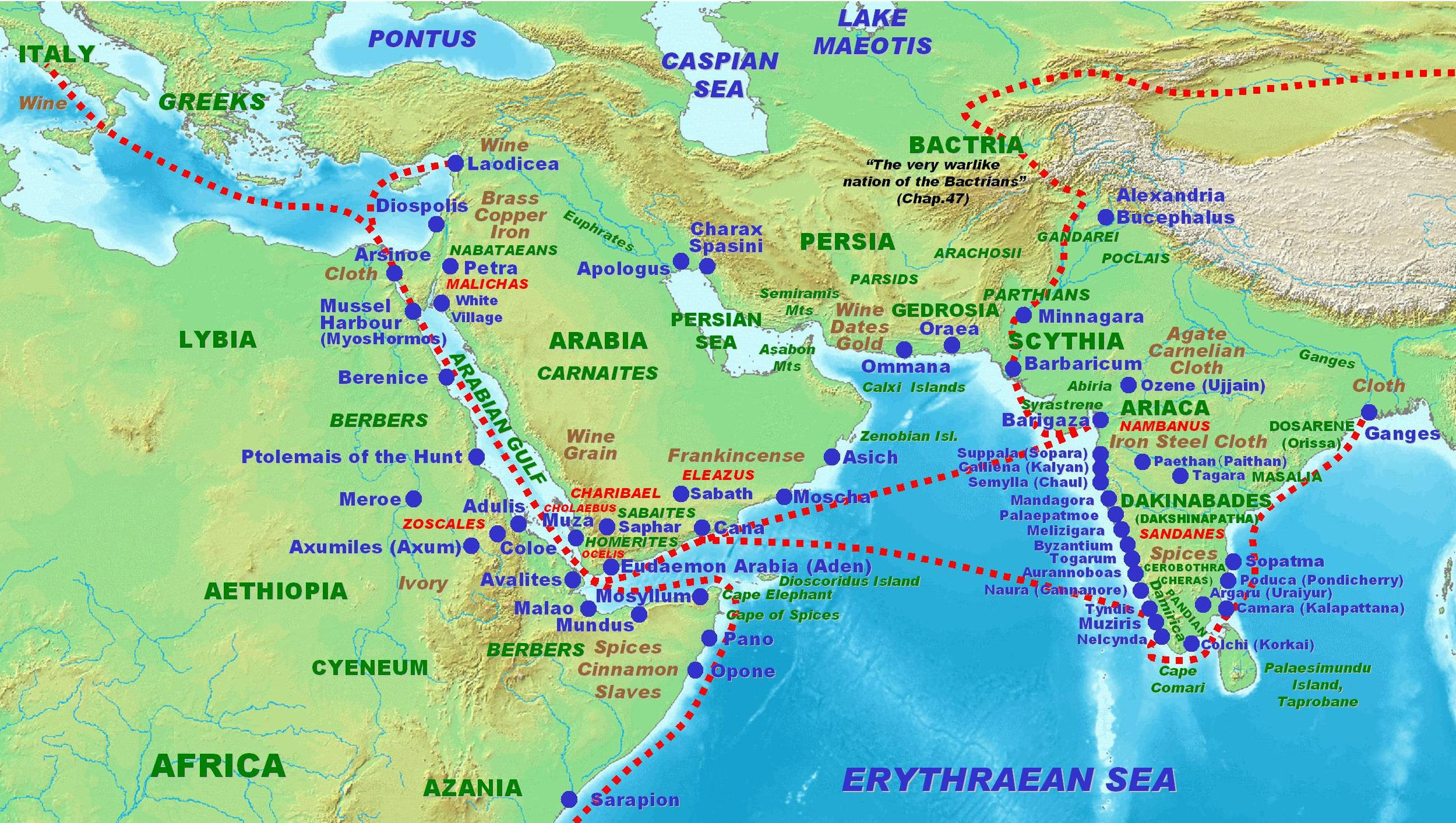|
Ahin Posh
Ahan Posh or Ahan Posh Tape (Persian: آهن پوش (''âhan puš'') "iron-covered (place)") is an ancient Buddhist stupa and vihara, monastery complex in the vicinity of Jalalabad, Afghanistan, dated to circa 150-160 CE, at the time of the Kushan Empire. The stupa was first excavated by William Simpson (Scottish artist), William Simpson in February 1879. He cleared the base of the stupa and dug a tunnel to the center. The excavation found the remains of a colossal Buddha statue in clay covered with stucco at the entrance of the principal gateway, with feet measuring 58 centimeters in length. The stupa was decorated with Indo-Corinthian capitals, "Indo-Persian" capitals, and :File:Ahin Posh stupa pilasters, Alexander Cunningham, 1879.jpg, capitals of the Ionic order typical of the Roman period. Some of the Indo-Corinthian capitals had Buddhas seated among the foliage. A relic deposit compartment was found at the center of the stupa Ahin Posh, which was reached by a tunnel dug by Si ... [...More Info...] [...Related Items...] OR: [Wikipedia] [Google] [Baidu] |
Kushan Empire
The Kushan Empire (– CE) was a Syncretism, syncretic empire formed by the Yuezhi in the Bactrian territories in the early 1st century. It spread to encompass much of what is now Afghanistan, Eastern Iran, India, Pakistan, Tajikistan and Uzbekistan. Kushan territory in India went at least as far as Saketa and Sarnath, now near Varanasi district, Varanasi in Uttar Pradesh, where inscriptions have been found dating to the era of the Kushan emperor Kanishka the Great. The Kushans were most probably one of five branches of the Yuezhi confederation, an Proto-Indo-Europeans, Indo-European nomadic people of possible Tocharians, Tocharian origin, who migrated from northwestern China (Xinjiang and Gansu) and settled in ancient Bactria. The founder of the dynasty, Kujula Kadphises, followed Iranian and Greek cultural ideas and iconography after the Greco-Bactrian tradition and was a follower of the Shaivism, Shaivite sect of Hinduism. Two later Kushan kings, Vima Kadphises and Vasudeva ... [...More Info...] [...Related Items...] OR: [Wikipedia] [Google] [Baidu] |
Afghanistan
Afghanistan, officially the Islamic Emirate of Afghanistan, is a landlocked country located at the crossroads of Central Asia and South Asia. It is bordered by Pakistan to the Durand Line, east and south, Iran to the Afghanistan–Iran border, west, Turkmenistan to the Afghanistan–Turkmenistan border, northwest, Uzbekistan to the Afghanistan–Uzbekistan border, north, Tajikistan to the Afghanistan–Tajikistan border, northeast, and China to the Afghanistan–China border, northeast and east. Occupying of land, the country is predominantly mountainous with plains Afghan Turkestan, in the north and Sistan Basin, the southwest, which are separated by the Hindu Kush mountain range. Kabul is the country's capital and largest city. Demographics of Afghanistan, Afghanistan's population is estimated to be between 36 and 50 million. Ancient history of Afghanistan, Human habitation in Afghanistan dates to the Middle Paleolithic era. Popularly referred to as the graveyard of empire ... [...More Info...] [...Related Items...] OR: [Wikipedia] [Google] [Baidu] |
Domitian
Domitian ( ; ; 24 October 51 – 18 September 96) was Roman emperor from 81 to 96. The son of Vespasian and the younger brother of Titus, his two predecessors on the throne, he was the last member of the Flavian dynasty. Described as "a ruthless but efficient autocrat", his authoritarian style of ruling put him at sharp odds with the Roman Senate, Senate, whose powers he drastically curtailed. Domitian had a minor and largely ceremonial role during the reigns of his father and brother. After the death of his brother, Domitian was declared emperor by the Praetorian Guard. His 15-year reign was the longest since Tiberius. As emperor, Domitian strengthened the economy by revaluing the Roman currency, Roman coinage, expanded the border defenses of the empire, and initiated a massive building program to restore the damaged city of Rome. Significant wars were fought in Britain, where his general Gnaeus Julius Agricola, Agricola made significant gains in his attempt to conquer Ca ... [...More Info...] [...Related Items...] OR: [Wikipedia] [Google] [Baidu] |
Indo-Roman Trade And Relations
Indo-Roman trade relations (see also the spice trade and incense road) was trade between the Indian subcontinent and the Roman Empire in Europe and the Mediterranean Sea. Trade through the overland caravan routes via Asia Minor and the Middle East, though at a relative trickle compared to later times, preceded the southern trade route via the Red Sea, which started around the beginning of the Common Era (CE), following the reign of Augustus and his conquest of Egypt in 30 BCE. The southern route so helped enhance trade between the ancient Roman Empire and the Indian subcontinent, that Roman politicians and historians are on record decrying the loss of silver and gold to buy silk to pamper Roman wives, and the southern route grew to eclipse and then totally supplant the overland trade route. Roman and Greek traders frequented the ancient Tamil country, present day Southern India and Sri Lanka, securing trade with the seafaring Tamil states of the Pandyan, Chola and Chera d ... [...More Info...] [...Related Items...] OR: [Wikipedia] [Google] [Baidu] |
Greco-Buddhism
Greco-Buddhism or Graeco-Buddhism was a cultural syncretism between Hellenistic culture and Buddhism developed between the 4th century BC and the 5th century AD in Gandhara, which was in present-day Pakistan and parts of north-east Afghanistan. While the Greco-Buddhist art shows clear Hellenistic influences, the majority of scholars do not assume a noticeable Greek influence on Gandharan Buddhism beyond the artistic realm. Cultural interactions between ancient Greece and Buddhism date back to Greek forays into the Indian subcontinent from the time of Alexander the Great. A few years after Alexander's death, the Easternmost fringes of the empire of his general Seleucus were lost in a war with the Mauryan Empire, under the reign of Chandragupta Maurya. The Mauryan Emperor Ashoka would convert to Buddhism and spread the religious philosophy throughout his domain, as recorded in the Edicts of Ashoka. This spread to the Greco-Bactrian kingdom, which itself seceded from the Sele ... [...More Info...] [...Related Items...] OR: [Wikipedia] [Google] [Baidu] |
Gandharan Buddhism
Gandhāran Buddhism was the Buddhist culture of ancient Gandhāra, which was a major center of Buddhism in the northwestern Indian subcontinent from the 3rd century BCE to approximately 1200 CE.Kurt Behrendt, Pia Brancaccio, Gandharan Buddhism: Archaeology, Art, and Texts, 2006 p. 11 Ancient Gandhāra corresponds to modern day north Pakistan, mainly the Peshawar valley and Potohar plateau as well as Afghanistan's Jalalabad. The region has yielded the Gandhāran Buddhist texts written in Gāndhārī language, Gāndhārī Prakrit the oldest Buddhist manuscripts yet discovered (1st century CE). Gandhāra was also home to a unique Buddhist artistic and architectural culture which blended elements from Indian art, Indian, Hellenistic, Roman and Parthian art.Kurt Behrendt, Pia Brancaccio, Gandharan Buddhism: Archaeology, Art, and Texts, 2006 p. 10 Buddhist Gandhāra was also influential as the gateway through which Buddhism spread to Central Asia and China. Overview Buddhism first to ... [...More Info...] [...Related Items...] OR: [Wikipedia] [Google] [Baidu] |
Gautama Buddha
Siddhartha Gautama, most commonly referred to as the Buddha (),* * * was a śramaṇa, wandering ascetic and religious teacher who lived in South Asia during the 6th or 5th century BCE and founded Buddhism. According to Buddhist legends, he was born in Lumbini, in what is now Nepal, to royal parents of the Shakya clan, but Great Renunciation, renounced his Householder (Buddhism), home life to live as a wandering ascetic. After leading a life of mendicancy, asceticism, and meditation, he attained Nirvana (Buddhism), nirvana at Bodh Gaya, Bodh Gayā in what is now India. The Buddha then wandered through the lower Indo-Gangetic Plain, teaching and building a Sangha, monastic order. Buddhist tradition holds he died in Kushinagar and reached ''parinirvana'' ("final release from conditioned existence"). According to Buddhist tradition, the Buddha taught a Middle Way between sensual indulgence and severe asceticism, leading to Vimutti, freedom from Avidyā (Buddhism), ignora ... [...More Info...] [...Related Items...] OR: [Wikipedia] [Google] [Baidu] |
Kanishka
Kanishka I, also known as Kanishka the Great, was an emperor of the Kushan dynasty, under whose reign (–150 CE) the empire reached its zenith. He is famous for his military, political, and spiritual achievements. A descendant of Kujula Kadphises, founder of the Kushan Empire, Kushan empire, Kanishka came to rule an empire extending from Central Asia and Gandhara to Pataliputra on the Gangetic plain. The main capital of his empire was located at history of Peshawar, ''Puruṣapura'' (Peshawar) in Gandhara, with another major capital at Mathura. Coins of Kanishka were found in Tripuri (present-day Jabalpur). Although he never converted to the religion, his conquests and patronage of Buddhism played an important role in the development of the Silk Road, and in the Silk Road transmission of Buddhism, transmission of Mahayana Buddhism from Gandhara across the Karakoram range to China. Around 127 CE, he replaced Koine Greek, Greek with Bactrian language, Bactrian as the official l ... [...More Info...] [...Related Items...] OR: [Wikipedia] [Google] [Baidu] |
Kanishka With Selene
Kanishka I, also known as Kanishka the Great, was an emperor of the Kushan dynasty, under whose reign (–150 CE) the empire reached its zenith. He is famous for his military, political, and spiritual achievements. A descendant of Kujula Kadphises, founder of the Kushan empire, Kanishka came to rule an empire extending from Central Asia and Gandhara to Pataliputra on the Gangetic plain. The main capital of his empire was located at ''Puruṣapura'' (Peshawar) in Gandhara, with another major capital at Mathura. Coins of Kanishka were found in Tripuri (present-day Jabalpur). Although he never converted to the religion, his conquests and patronage of Buddhism played an important role in the development of the Silk Road, and in the transmission of Mahayana Buddhism from Gandhara across the Karakoram range to China. Around 127 CE, he replaced Greek with Bactrian as the official language of administration in the empire. Earlier scholars believed that Kanishka ascended the Kushan ... [...More Info...] [...Related Items...] OR: [Wikipedia] [Google] [Baidu] |
Selene
In ancient Greek mythology and Ancient Greek religion, religion, Selene (; , meaning "Moon")''A Greek–English Lexicon's.v. σελήνη is the goddess and personification of the Moon. Also known as Mene (), she is traditionally the daughter of the Titans Hyperion (Titan), Hyperion and Theia, and sister of the Solar deity, sun god Helios and the Dawn deities, dawn goddess Eos. She drives her moon chariot across the heavens. Several lovers are attributed to her in various myths, including Zeus, Pan (god), Pan, and the mortal Endymion (mythology), Endymion. In post-classical times, Selene was often identified with Artemis, much as her brother, Helios, was identified with Apollo. Selene and Artemis were also associated with Hecate and all three were regarded as lunar deity, moon and lunar goddesses, but only Selene was regarded as the personification of the Moon itself. Her equivalent in Roman religion and mythology is the goddess Luna (goddess), Luna. Etymology and origins ... [...More Info...] [...Related Items...] OR: [Wikipedia] [Google] [Baidu] |







